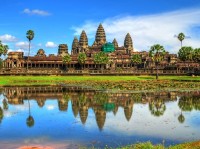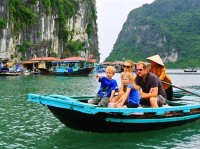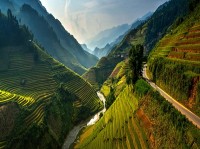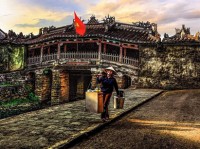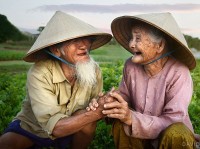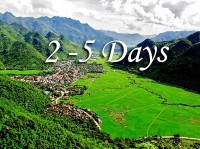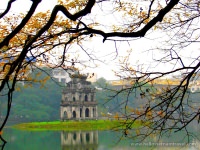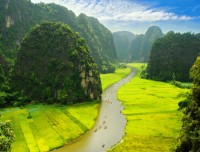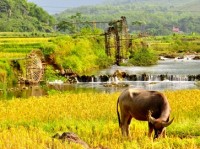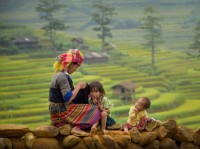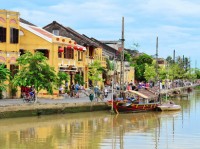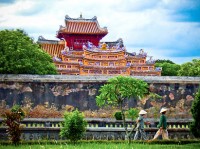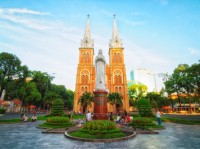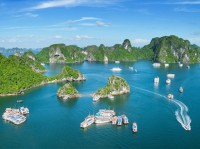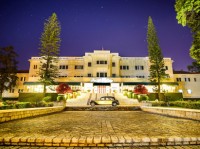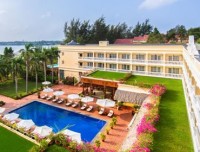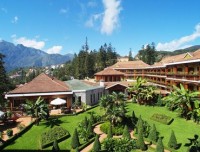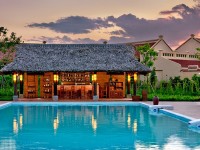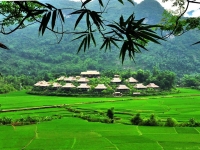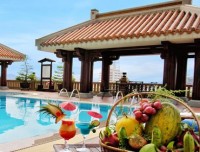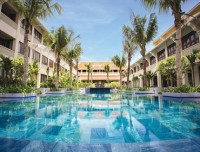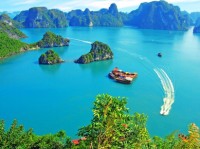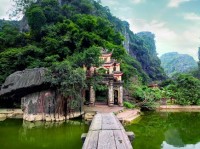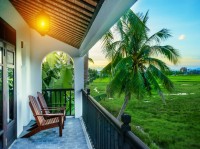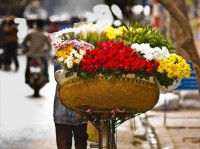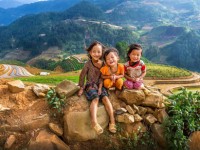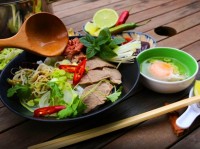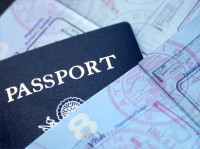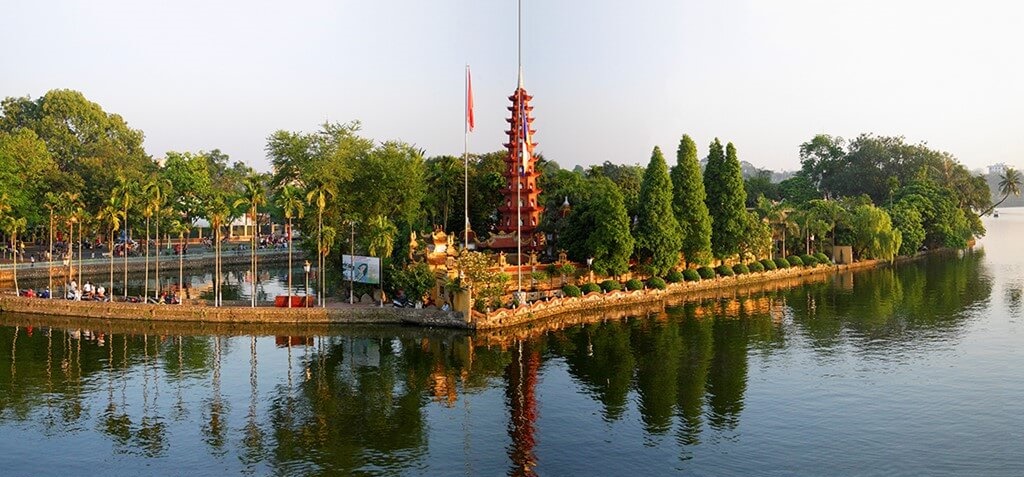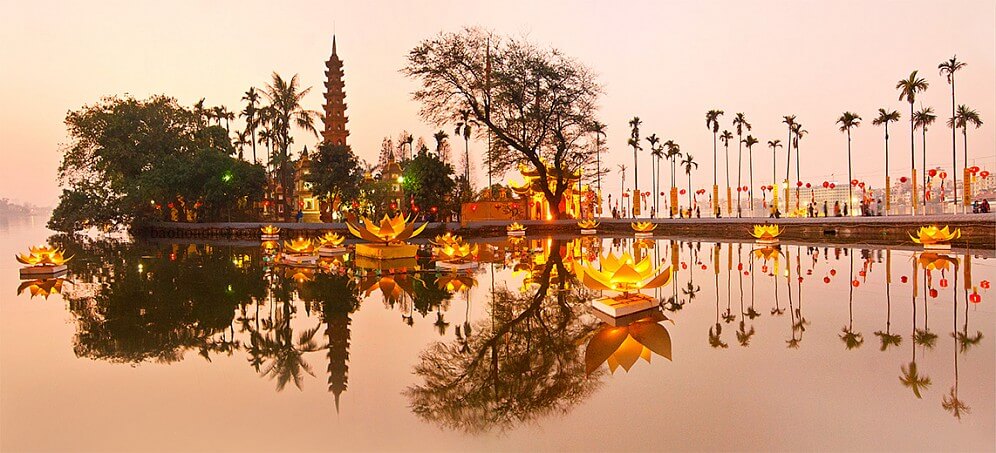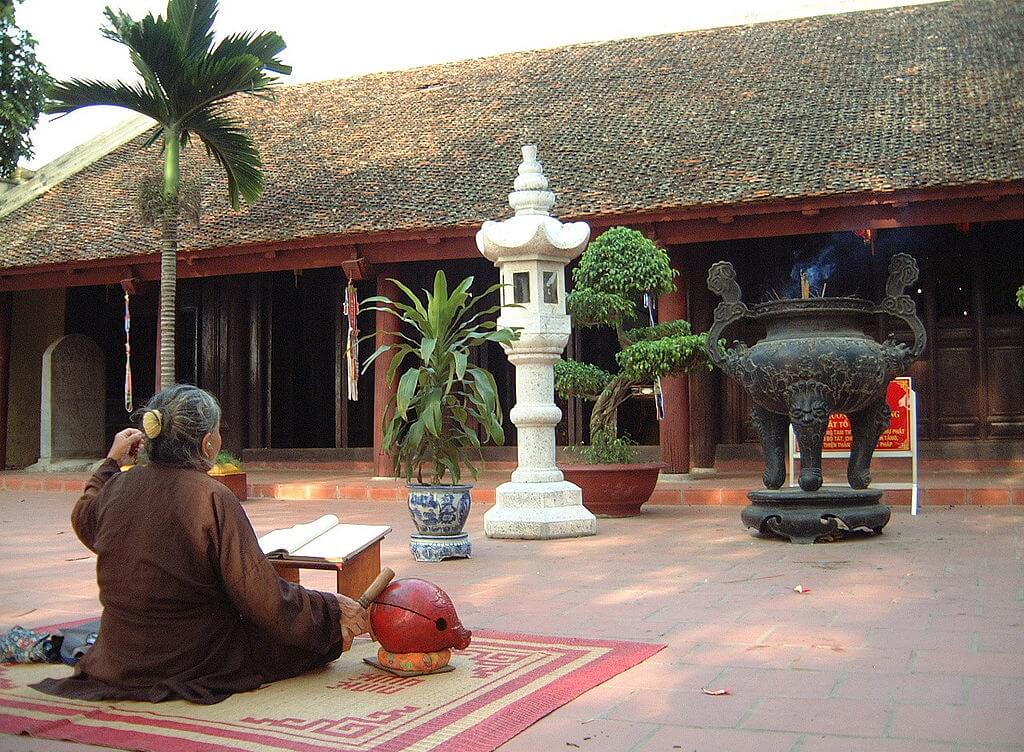History
It is said that the pagoda was built under Ly Nam De emperor (541-542), which lies on Red River’s waterfront. Its first name is “Khai Quoc” with the implication for the opening day of Ly dynasty. Until the period of Le Kinh Tong emperor (1600-1618), the pagoda was moved to a islet of West Lake with a new name: “Tran Quoc” (the protection for Vietnamese nation). Going through the big chances of Vietnam history, Tran Quoc pagoda still remains the spiritual core values, which express the desire of Vietnamese about the peace and development of their own nation. Situated on a large lake with beautiful landscape, the pagoda used to be one of the most favorite destinations for Vietnamese emperors and lords, especially the important days such as Tet holiday. Many palaces were erected around Tran Quoc pagoda to serve for the getaway of royal families in the lately 17th century.
The entrance of Tran Quoc Pagoda
Tran Quoc Pagoda was restored many times in Vietnam history, in particular, under Nguyen dynasty in the early 19th century. With the priceless values of history and religion, the pagoda used to be recognized as top-ranking historical places around Indochina.
A panorama of Tran Quoc Pagoda
Until now, Tran Quoc Pagoda still has played an indispensable role in the Vietnamese life. Everyone often visit this place to wish for a better life when the national holidays come. The pagoda is also an important place for implementing Buddhist rituals in Vietnam. With the role as one of the centre of Vietnamese Buddhism, Tran Quoc pagoda is often a destination for senior leaders of foreign countries.
The shimmering beauty of Tran Quoc pagoda in the special days
Structures and landscapes
Tran Quoc Pagoda is a typical for Vietnamese architectural model, which is a harmonious combination between Buddhist structures and fresh nature. All structures and decorations follow strict rules of Buddhist style, which include 3 main parts: “Tien Duong”, House for burning incense and “Thuong Dien” namely. Besides, there is a house for the worship of Buddhist ancestors and a bell tower behind the area of “Thuong Dien”.
Tran Quoc Pagoda still remains many valuable relics, especially the Buddha statues in area of “Thuong Dien”. Those statues carved elaborately through skillful hands of craftsmen under feudalism. Oustandingly, “Thich ca nhap Niet ban” is evaluated as one of the most beautiful wooden-covered statue in Vietnam at the present time.
Buddha Statues in Tran Quoc pagoda
A system of ancient stupas highlights for the solemnity of the pagoda until 18th century. The biggest stupa is known as “Luc do dai sen” composing of 11 floors with 15m in height. Each stupa’s floor has 6 doomed doors with a Buddha statue inside. On the top of stupa, the ancient people put a nine-layer lotus (Cuu lien hoa), which makes from gemstones. The lotus is explained as a permanent symbol of supreme knowledge, pure soul and the other good values as regards of Buddhist teachings.
Tran Quoc Pagoda can offer the unique taste about the attraction of its sublime beauty in different time. In the morning, the pagoda is covered with a slight layer of smog, hidden into trees’ canopy, which creates the contemplation for its sphere. Sitting under trees’ shades in the summer, cool breezes flow from West Lake that visitors can feel more comfortable amidst the hot temperature of Hanoi capital.


